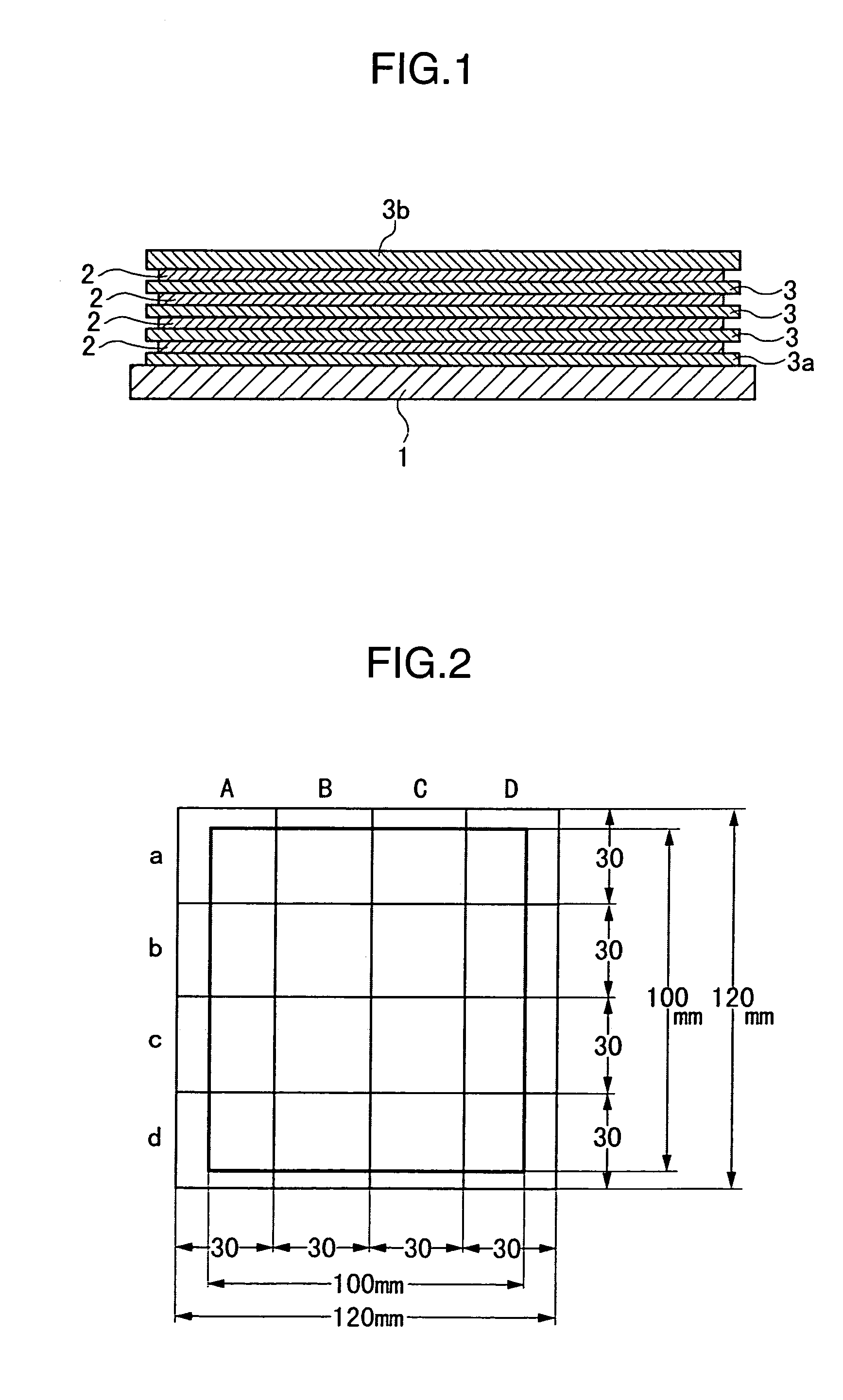Ceramic sheet and method of producing ceramic sheet
a ceramic sheet and ceramic sheet technology, applied in the field of ceramic sheet, can solve the problems of low mechanical strength of ceramic sheet, variation in strength over the surface, and ceramic sheet does not exhibit excellent and uniform properties over its surface, so as to reduce frictional resistance and suppress flaws
- Summary
- Abstract
- Description
- Claims
- Application Information
AI Technical Summary
Benefits of technology
Problems solved by technology
Method used
Image
Examples
example 1
[Production of Green Sheet for Ceramic Sheet]
[0070]An aqueous solution of zirconium oxychloride containing 14.8 mole % of yttrium chloride was dripped into an ammonia water to produce a precipitate, and the precipitate was washed and dried. The dried precipitate was baked at 1000° C. to obtain zirconia powder. The zirconia powder was measured with a laser diffraction system particle size distribution meter (SALD-1100, a product of Shimadzu Corp.). The average particle diameter of the zirconia powder was 1.5 μm, and the particle diameter at 90 vol % thereof was 3 μm.
[0071]Pure water was added to the zirconia powder to prepare a powder-dispersed liquid of 20 wt %. The liquid was ground with a bead mill for 2 hours, and then was dried at 50° C. under reduced pressure. As a result, obtained was zirconia powder stabilized by 8 mol % of yttria having an average particle diameter of 0.22 μm and a particle diameter of 0.8 μm at 90 vol %.
[0072]To 100 parts by weight of the stabilized zirconi...
example 2
[Green Sheet for Ceramic Sheet]
[0080]An aqueous solution of zirconium oxychloride containing 5.8 mole % of yttrium chloride was dripped into an ammonia water to produce a precipitate, and the precipitate was washed and dried. The dried precipitate was baked at 1000° C. to obtain zirconia powder. Pure water was added to the zirconia powder to prepare a 20 wt % of powder-dispersed liquid. The liquid was grinded with a bead mill for 2 hours, and then was dried at 50° C. under reduced pressure. As a result, obtained was zirconia powder stabilized by 3 mole % of yttria having an average particle diameter of 0.51 μm and a particle diameter of 1.28 μm at 90 vol %.
[0081]By repeating the steps of Example 1, a green sheet for ceramic sheet having a thickness of 0.13 mm was produced using the zirconia powder.
[Spacer Sheet and Cover Sheet]
[0082]As a spacer sheet and cover sheet, a green sheet produced by repeating the steps of Example 1 was baked at 1500° C. to produce a calcined sheet having a...
example 3
[Green Sheet for Ceramic Sheet]
[0084]The zirconia powder stabilized by 3 mole % of yttria obtained in Example 2 was mixed with alumina powder of 0.5 wt % (AL-160-SG-3, a product of Showa Denko Co., Ltd.) with respect to the zirconia powder to prepare a zirconia-alumina mixed powder. By repeating the steps of Example 1, a green sheet for ceramic sheet was produced using the zirconia-alumina mixed powder. The green sheet had a thickness of 0.07 mm.
[Spacer Sheet and Cover Sheet]
[0085]As a spacer sheet and cover sheet, a green sheet was produced by repeating the steps of Example 2, except for using mixed powder of the spherical alumina particles manufactured by Nippon Shokubai Co., Ltd. (an average particle diameter: 0.8 μm) and the zirconia stabilized by yttria of 3 mole % prepared in Example 2 (an average particle diameter: 0.51 μm). The mixing ratio of the spherical alumina particles to the zirconia was 9:1 (alumina:zirconia). The green sheet was baked at 1500° C. to obtain a calcine...
PUM
| Property | Measurement | Unit |
|---|---|---|
| area | aaaaa | aaaaa |
| particle diameter | aaaaa | aaaaa |
| temperature | aaaaa | aaaaa |
Abstract
Description
Claims
Application Information
 Login to View More
Login to View More - R&D
- Intellectual Property
- Life Sciences
- Materials
- Tech Scout
- Unparalleled Data Quality
- Higher Quality Content
- 60% Fewer Hallucinations
Browse by: Latest US Patents, China's latest patents, Technical Efficacy Thesaurus, Application Domain, Technology Topic, Popular Technical Reports.
© 2025 PatSnap. All rights reserved.Legal|Privacy policy|Modern Slavery Act Transparency Statement|Sitemap|About US| Contact US: help@patsnap.com


